 An annuity contract is purchased from a life insurance company. The individual gives the insurance company a lump-sum payment or a series of payments. In return, the company will provide a stream of payments to the individual. Although an annuity is purchased from a life insurance company, it serves a different purpose than life insurance. Below is a chart comparing life insurance to annuities.
An annuity contract is purchased from a life insurance company. The individual gives the insurance company a lump-sum payment or a series of payments. In return, the company will provide a stream of payments to the individual. Although an annuity is purchased from a life insurance company, it serves a different purpose than life insurance. Below is a chart comparing life insurance to annuities.
This 4-page fact sheet was written by Michael S. Gutter and Lisa Leslie, and published by the UF Department of Family Youth and Community Sciences, March 2014.
http://edis.ifas.ufl.edu/fy1406
Author: dihagan
Identifying Key Community Leaders to Assess Extension Programming Needs
 Needs and assets assessments are a key task for Extension agents because they aid the development and delivery of research-based programs that address local needs. The purpose of this article is to describe the process of identifying key leaders to support an Extension agent’s needs assessment activities through interviews. This 4-page fact sheet was written by Laura A. (Sanagorski) Warner and Sebastian Galindo-Gonzalez, and published by the UF Department of Agricultural Education and Communication, May 2014.
Needs and assets assessments are a key task for Extension agents because they aid the development and delivery of research-based programs that address local needs. The purpose of this article is to describe the process of identifying key leaders to support an Extension agent’s needs assessment activities through interviews. This 4-page fact sheet was written by Laura A. (Sanagorski) Warner and Sebastian Galindo-Gonzalez, and published by the UF Department of Agricultural Education and Communication, May 2014.
http://edis.ifas.ufl.edu/wc164
Communicating with Extension Clients about Water
 As the U.S. and Florida populations continue to increase and the demand for fresh, clean water rises, water quality and quantity issues will become increasingly important. Extension faculty should understand public opinion surrounding water issues and identify the information that needs to be communicated to the public about water issues, as well as the best mode for this communication. This EDIS publication will provide an overview of how to communicate with Florida residents about water, including information about their preferred communication method and what topics surrounding water Florida residents find of interest. This publication will better equip Extension faculty to discuss water quantity and quality issues with Florida residents. This 4-page fact sheet was written by Caroline G. Roper and Alexa J. Lamm, and published by the UF Department of Agricultural Education and Communication, June 2014.
As the U.S. and Florida populations continue to increase and the demand for fresh, clean water rises, water quality and quantity issues will become increasingly important. Extension faculty should understand public opinion surrounding water issues and identify the information that needs to be communicated to the public about water issues, as well as the best mode for this communication. This EDIS publication will provide an overview of how to communicate with Florida residents about water, including information about their preferred communication method and what topics surrounding water Florida residents find of interest. This publication will better equip Extension faculty to discuss water quantity and quality issues with Florida residents. This 4-page fact sheet was written by Caroline G. Roper and Alexa J. Lamm, and published by the UF Department of Agricultural Education and Communication, June 2014.
http://edis.ifas.ufl.edu/wc165
Water and Nitrogen BMPs for Tomato and Watermelon: Water Quality and Economics
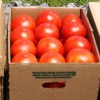 Results of a two-year, four-crop-cycles experiment indicated that the recommended Best Management Practice (BMP) water and fertilizer nitrogen (N) rates for seepage-irrigated tomato in south Florida can reduce water use and N leaching to groundwater without adversely impacting yield. The same is true for watermelon for average rainfall conditions. This 5-page fact sheet was written by Sanjay Shukla, Gregory S. Hendricks, Fritz M. Roka, and Thomas A. Obreza, and published by the UF Department of Agricultural and Biological Engineering, May 2014.
Results of a two-year, four-crop-cycles experiment indicated that the recommended Best Management Practice (BMP) water and fertilizer nitrogen (N) rates for seepage-irrigated tomato in south Florida can reduce water use and N leaching to groundwater without adversely impacting yield. The same is true for watermelon for average rainfall conditions. This 5-page fact sheet was written by Sanjay Shukla, Gregory S. Hendricks, Fritz M. Roka, and Thomas A. Obreza, and published by the UF Department of Agricultural and Biological Engineering, May 2014.
http://edis.ifas.ufl.edu/ae503
Natural Products for Managing Landscape and Garden Pests in Florida
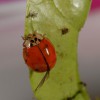 This publication describes “natural” pesticides: alternatives that are usually less toxic to non-target organisms and the environment and that, when used correctly, can be effective substitutes for synthetic products. In this publication, natural substances used for pest management in landscapes and gardens are grouped into oils, plant extracts, insecticidal soaps, mineral insecticides, microbial insecticides, and products that control diseases. Certain products contain combinations of these groups (e.g., soap and oil). This 8-page fact sheet was written by Eileen A. Buss and Sydney G. Park Brown, and published by the UF Department of Entomology and Nematology, April 2014.
This publication describes “natural” pesticides: alternatives that are usually less toxic to non-target organisms and the environment and that, when used correctly, can be effective substitutes for synthetic products. In this publication, natural substances used for pest management in landscapes and gardens are grouped into oils, plant extracts, insecticidal soaps, mineral insecticides, microbial insecticides, and products that control diseases. Certain products contain combinations of these groups (e.g., soap and oil). This 8-page fact sheet was written by Eileen A. Buss and Sydney G. Park Brown, and published by the UF Department of Entomology and Nematology, April 2014.
http://edis.ifas.ufl.edu/in197
The Interaction of Nutrition and Health in Beef Cows
 In cattle, all physiological processes in the body, including the immune system, are influenced by the cattle’s nutritional status. Therefore, the past and present nutritional status serves as an immune function modulator in cattle that can influence the performance and reproduction of beef cattle. This 6-page fact sheet was written by Matt Hersom, and published by the UF Department of Animal Sciences, June 2014.
In cattle, all physiological processes in the body, including the immune system, are influenced by the cattle’s nutritional status. Therefore, the past and present nutritional status serves as an immune function modulator in cattle that can influence the performance and reproduction of beef cattle. This 6-page fact sheet was written by Matt Hersom, and published by the UF Department of Animal Sciences, June 2014.
http://edis.ifas.ufl.edu/an292
Water Withdrawals and Their Use in Florida in 2010
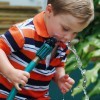 This publication is based on Florida water use information collected by the United States Geological Service. It expands on EDIS document FE797 that examined Florida water withdrawals data for 2005. In addition, in EDIS document FE757 (Florida’s Water Resources), the authors describe Florida’s abundant water resources—the state receives about 54 inches of rainfall per annum, compared to 30 inches nationwide, and it overlies prolific aquifers. Whether water is scarce or abundant, however, depends not only upon available supplies, but also upon patterns of water use. To gather this information, the United States Geological Survey employs several water-use categories to develop estimates of water withdrawals and water use. This 5-page fact sheet was written by Tatiana Borisova and Jenna Rogers, and published by the UF Department of Food and Resource Economics, May 2014.
This publication is based on Florida water use information collected by the United States Geological Service. It expands on EDIS document FE797 that examined Florida water withdrawals data for 2005. In addition, in EDIS document FE757 (Florida’s Water Resources), the authors describe Florida’s abundant water resources—the state receives about 54 inches of rainfall per annum, compared to 30 inches nationwide, and it overlies prolific aquifers. Whether water is scarce or abundant, however, depends not only upon available supplies, but also upon patterns of water use. To gather this information, the United States Geological Survey employs several water-use categories to develop estimates of water withdrawals and water use. This 5-page fact sheet was written by Tatiana Borisova and Jenna Rogers, and published by the UF Department of Food and Resource Economics, May 2014.
http://edis.ifas.ufl.edu/fe943
Soil pH Management for Optimum Commercial Fruit Production in Florida
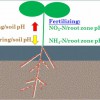 Soil pH is one of the most important soil chemical properties and affects nutrient bioavailability and microbial activity. The purpose of this article is to provide an overview for faculty, crop consultants, crop advisors, fruit growers, and students who are interested in fruit production. The crop response to soil pH varies due to crop genetic diversity. Soil pH determines nutrient bioavailability and hence fruit growth, yield, and quality. This 6-page fact sheet was written by Guodong Liu, Rao Mylavarapu, Ed Hanlon, and Wei Chieh Lee, and published by the UF Department of Horticultural Sciences, April 2014.
Soil pH is one of the most important soil chemical properties and affects nutrient bioavailability and microbial activity. The purpose of this article is to provide an overview for faculty, crop consultants, crop advisors, fruit growers, and students who are interested in fruit production. The crop response to soil pH varies due to crop genetic diversity. Soil pH determines nutrient bioavailability and hence fruit growth, yield, and quality. This 6-page fact sheet was written by Guodong Liu, Rao Mylavarapu, Ed Hanlon, and Wei Chieh Lee, and published by the UF Department of Horticultural Sciences, April 2014.
http://edis.ifas.ufl.edu/hs1234
Socio-Demographic Characteristics and Concerns about Water Quality Issues of Master Gardener Program Volunteers
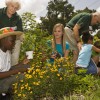 To respond to residents’ informational needs, the Cooperative Extension Service offers a variety of volunteer training and certification programs. Who participates in such programs? What types of audiences are being reached? Do such programs increase knowledge and change behavior of the volunteers? In this article, we attempt to answer these questions by summarizing existing studies and using responses to a regional public survey, and by focusing on the Master Gardener program and surface water quality issues as examples. This 7-page fact sheet was written by Tatiana Borisova, Michael Smolen, Maria Pilar Useche, Jon Calabria, Nickola Sochacka, Damian Adams, Diane Boellstorff, Jason Evans, and Robert Mahler, and published by the UF Department of Food and Resource Economics, May 2014.
To respond to residents’ informational needs, the Cooperative Extension Service offers a variety of volunteer training and certification programs. Who participates in such programs? What types of audiences are being reached? Do such programs increase knowledge and change behavior of the volunteers? In this article, we attempt to answer these questions by summarizing existing studies and using responses to a regional public survey, and by focusing on the Master Gardener program and surface water quality issues as examples. This 7-page fact sheet was written by Tatiana Borisova, Michael Smolen, Maria Pilar Useche, Jon Calabria, Nickola Sochacka, Damian Adams, Diane Boellstorff, Jason Evans, and Robert Mahler, and published by the UF Department of Food and Resource Economics, May 2014.
http://edis.ifas.ufl.edu/fe942
Mole Cricket IPM Guide for Florida
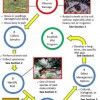 Mole crickets can become serious pests of turfgrasses, pastures, and vegetable seedlings. The first step in determining if you have a mole cricket problem at a site is to compare the existing damage to pictures of known mole cricket damage. If the damage is likely caused by mole crickets, specimens should be obtained and the pest identified. You then should determine if the number of mole crickets is great enough to cause an unacceptable level of damage and decide what control measures should be used. Eventually, a long-term, sustainable integrated pest management (IPM) program should be established. This 20-page guide will help you identify mole cricket infestations and manage them effectively and economically while minimizing environmental impacts. Written by C. R. Kerr, N. C. Leppla, E. A. Buss, and J. H. Frank, and published by the UF Department of Entomology and Nematology, May 2014.
Mole crickets can become serious pests of turfgrasses, pastures, and vegetable seedlings. The first step in determining if you have a mole cricket problem at a site is to compare the existing damage to pictures of known mole cricket damage. If the damage is likely caused by mole crickets, specimens should be obtained and the pest identified. You then should determine if the number of mole crickets is great enough to cause an unacceptable level of damage and decide what control measures should be used. Eventually, a long-term, sustainable integrated pest management (IPM) program should be established. This 20-page guide will help you identify mole cricket infestations and manage them effectively and economically while minimizing environmental impacts. Written by C. R. Kerr, N. C. Leppla, E. A. Buss, and J. H. Frank, and published by the UF Department of Entomology and Nematology, May 2014.
http://edis.ifas.ufl.edu/in1021
How to Determine Run Time and Irrigation Cycles for Drip Irrigation: Tomato and Pepper Examples
 Even though drip irrigation is more efficient than the other irrigation methods, proper system management is crucial if that increased efficiency is going to result in water savings and a viable crop. One important aspect of drip irrigation management for crop success is irrigation scheduling, which includes determining both how much and when to irrigate. The grower can use several different methods to help develop a suitable irrigation schedule. Proper scheduling needs to be implemented to take full advantage of the increased drip irrigation efficiency. Two examples are presented in this 5-page fact sheet for tomatoes and peppers, which are two important vegetable crops in Florida, to demonstrate the use of reference evapotranspiration and crop coefficients in developing a drip irrigation schedule. Written by Sanjay Shukla, James M. Knowles, and Niroj K. Shrestha, and published by the UF Department of Agricultural and Biological Engineering, April 2014.
Even though drip irrigation is more efficient than the other irrigation methods, proper system management is crucial if that increased efficiency is going to result in water savings and a viable crop. One important aspect of drip irrigation management for crop success is irrigation scheduling, which includes determining both how much and when to irrigate. The grower can use several different methods to help develop a suitable irrigation schedule. Proper scheduling needs to be implemented to take full advantage of the increased drip irrigation efficiency. Two examples are presented in this 5-page fact sheet for tomatoes and peppers, which are two important vegetable crops in Florida, to demonstrate the use of reference evapotranspiration and crop coefficients in developing a drip irrigation schedule. Written by Sanjay Shukla, James M. Knowles, and Niroj K. Shrestha, and published by the UF Department of Agricultural and Biological Engineering, April 2014.
http://edis.ifas.ufl.edu/ae500
Florida MarketMaker and Florida Food Connect: Using E-commerce to Enhance Seafood Marketing in Florida
 While the state and many non-profit organizations provide information to the Florida seafood and aquaculture industry to help them market their catch, they offer few resources facilitating e-commerce. As a business tool, e-commerce can help expedite the buying and selling of seafood products among consumers, producers, and other businesses within the food industry value chain. E-commerce is a new promotional strategy producers can use to improve their marketing efficiency. For example, the affiliated websites Florida MarketMaker and Florida Food Connect are designed to enhance the online presence for the Florida seafood industry. Web portals such as these increase the visibility of seafood businesses by allowing dealers to create a searchable online profile attracting more customers seeking locally sourced seafood. This 6-page fact sheet was written by Charles M. Adams and William Barker, and published by the UF Department of Food and Resource Economics, May 2014.
While the state and many non-profit organizations provide information to the Florida seafood and aquaculture industry to help them market their catch, they offer few resources facilitating e-commerce. As a business tool, e-commerce can help expedite the buying and selling of seafood products among consumers, producers, and other businesses within the food industry value chain. E-commerce is a new promotional strategy producers can use to improve their marketing efficiency. For example, the affiliated websites Florida MarketMaker and Florida Food Connect are designed to enhance the online presence for the Florida seafood industry. Web portals such as these increase the visibility of seafood businesses by allowing dealers to create a searchable online profile attracting more customers seeking locally sourced seafood. This 6-page fact sheet was written by Charles M. Adams and William Barker, and published by the UF Department of Food and Resource Economics, May 2014.
http://edis.ifas.ufl.edu/fe944
Comparison of Soil Test Extractants for Available Soil Phosphorus in High pH Sandy Soils of South Florida
 This document addresses the selection of soil nutrient extractants in high pH soils and discusses their relationship to both nutrition and fertilizer management. This document’s objective is to describe the impact of selected soil extractants on nutrient management and their ability to determine soil phosphorus availability. The target audience for this series dealing with citrus nutrition includes Certified Crop Advisers; citrus, vegetable, and sugarcane producers; fertilizer dealers; and other parties interested in crop fertilization practices. This 4-page fact sheet was written by Kelly T. Morgan and Kamal Mahmoud, and published by the UF Department of Soil and Water Science, December 2014.
This document addresses the selection of soil nutrient extractants in high pH soils and discusses their relationship to both nutrition and fertilizer management. This document’s objective is to describe the impact of selected soil extractants on nutrient management and their ability to determine soil phosphorus availability. The target audience for this series dealing with citrus nutrition includes Certified Crop Advisers; citrus, vegetable, and sugarcane producers; fertilizer dealers; and other parties interested in crop fertilization practices. This 4-page fact sheet was written by Kelly T. Morgan and Kamal Mahmoud, and published by the UF Department of Soil and Water Science, December 2014.
http://edis.ifas.ufl.edu/ss613
Clasificacion de las licencias para aplicadores dictadas por el Departamento de Agricultura y Servicios al Consumidor del estado de la Florida (FDACS), relacionadas con agricultura y control de plagas
 Esta guía ofrece una explicación de las licencias para aplicadores de pesticidas privados, públicos y comerciales emitidos por FDACS en el Capítulo 487 de los Estatutos de la Florida. This 4-page fact sheet is the Spanish language version of Agricultural and Related Pest Control Applicator License Classifications under the Florida Department of Agriculture and Consumer Services (FDACS). Written by Frederick M. Fishel and Tatiana Sanchez, and published by the UF Department of Agronomy, February 2014.
Esta guía ofrece una explicación de las licencias para aplicadores de pesticidas privados, públicos y comerciales emitidos por FDACS en el Capítulo 487 de los Estatutos de la Florida. This 4-page fact sheet is the Spanish language version of Agricultural and Related Pest Control Applicator License Classifications under the Florida Department of Agriculture and Consumer Services (FDACS). Written by Frederick M. Fishel and Tatiana Sanchez, and published by the UF Department of Agronomy, February 2014.
http://edis.ifas.ufl.edu/pi249
Cattle Fencing BMP Can Reduce Phosphorus Loads from Florida Ranches
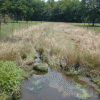 BMPs are an important tool in helping the state and individual landowners protect and enhance state’s waters. Given the water quality issues facing Lake Okeechobee and other sensitive water bodies, the importance of BMP implementation has increased since their official establishment as part of the FWRA. In order to ensure that BMPs are reducing nutrient loadings, on-farm research is needed to verify BMP effectiveness. A four-year study was conducted to evaluate the effectiveness of the cow/calf stream fencing BMP. The study concluded that the BMP did reduce the amount of P being discharged from the ranch. This BMP should continue to be included in the cow/calf BMP manual, and, hopefully, its widespread implementation will help the state in meeting its TMDLs. This 3-page fact sheet was written by Sanjay Shukla, Wendy D. Graham, Alan Hodges, and James M. Knowles, and published by the UF Department of Agricultural and Biological Engineering, May 2014.
BMPs are an important tool in helping the state and individual landowners protect and enhance state’s waters. Given the water quality issues facing Lake Okeechobee and other sensitive water bodies, the importance of BMP implementation has increased since their official establishment as part of the FWRA. In order to ensure that BMPs are reducing nutrient loadings, on-farm research is needed to verify BMP effectiveness. A four-year study was conducted to evaluate the effectiveness of the cow/calf stream fencing BMP. The study concluded that the BMP did reduce the amount of P being discharged from the ranch. This BMP should continue to be included in the cow/calf BMP manual, and, hopefully, its widespread implementation will help the state in meeting its TMDLs. This 3-page fact sheet was written by Sanjay Shukla, Wendy D. Graham, Alan Hodges, and James M. Knowles, and published by the UF Department of Agricultural and Biological Engineering, May 2014.
http://edis.ifas.ufl.edu/ae501
Boron (B) and Chlorine (Cl) for Citrus Trees
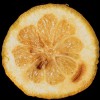 Since mineral nutrition is a major factor in maximizing yield of high-quality fruit, understanding the functions of mineral elements, diagnosing nutrient deficiencies, and providing needed fertilizers are essential. This 4-page fact sheet describes and discusses boron (B) and chlorine (Cl) deficiencies, functions, and recommended practices to alleviate nutritional problems. Written by Mongi Zekri and Tom Obreza , and published by the UF Department of Soil and Water Science, March 2014.
Since mineral nutrition is a major factor in maximizing yield of high-quality fruit, understanding the functions of mineral elements, diagnosing nutrient deficiencies, and providing needed fertilizers are essential. This 4-page fact sheet describes and discusses boron (B) and chlorine (Cl) deficiencies, functions, and recommended practices to alleviate nutritional problems. Written by Mongi Zekri and Tom Obreza , and published by the UF Department of Soil and Water Science, March 2014.
http://edis.ifas.ufl.edu/ss619
Anaerobic Digesters for Manure Management for Livestock Operations
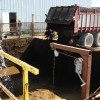 Livestock wastes can be important sources of nutrients for crops, but manure must be managed properly to prevent loss of nutrients to the environment in air or ground and/or surface water. Stabilization of manure is important prior to successfully recycling the organic material back to arable lands. Methods for stabilizing livestock wastes include composting, aerobic digestion, anaerobic digestion, lime stabilization, and heat drying. The stabilization process reduces the organic matter and water contents, unpleasant odors, concentrations of pathogenic microorganisms, and weed seeds. Anaerobic digestion (AD), which is the topic of this fact sheet, also results in the production of renewable energy in the form of methane-rich biogas. This 10-page fact sheet informs farmers and Extension agents about types of anaerobic digester systems used in the United States with various manure-handling systems. It points out digester systems currently being used in Florida and the benefits of managing livestock manure with a digester system. Written by Rishi Prasad, George Hochmuth, and Ann C. Wilkie, and published by the UF Department of Soil and Water Science, March 2014.
Livestock wastes can be important sources of nutrients for crops, but manure must be managed properly to prevent loss of nutrients to the environment in air or ground and/or surface water. Stabilization of manure is important prior to successfully recycling the organic material back to arable lands. Methods for stabilizing livestock wastes include composting, aerobic digestion, anaerobic digestion, lime stabilization, and heat drying. The stabilization process reduces the organic matter and water contents, unpleasant odors, concentrations of pathogenic microorganisms, and weed seeds. Anaerobic digestion (AD), which is the topic of this fact sheet, also results in the production of renewable energy in the form of methane-rich biogas. This 10-page fact sheet informs farmers and Extension agents about types of anaerobic digester systems used in the United States with various manure-handling systems. It points out digester systems currently being used in Florida and the benefits of managing livestock manure with a digester system. Written by Rishi Prasad, George Hochmuth, and Ann C. Wilkie, and published by the UF Department of Soil and Water Science, March 2014.
http://edis.ifas.ufl.edu/ss615
Bush Snapbean Production in Miami-Dade County, Florida
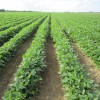 Miami-Dade County is the primary production region for fresh-market bush snapbeans with 57% or 18,696 acres of the Florida bean acreage. Production costs vary from $16.53 to $21.87 per 30 lb. bushel or $4,046 to $4,711 per acre. Acceptable yields range from 185 to over 300 bushels per acre. Snapbeans produced in Miami-Dade County are sold nationwide for the fresh market starting just before Thanksgiving and continuing through the winter and spring months. This 9-page fact sheet was written by S. Zhang, D. Seal, M. Ozores-Hampton, M. Lamberts, Y. Li, W. Klassen, and T. Olczyk, specifically for growers in Miami-Dade County as a supplement to The Vegetable Production Handbook for Florida (SP170). Published by the UF Department of Horticultural Sciences, July 2014.
Miami-Dade County is the primary production region for fresh-market bush snapbeans with 57% or 18,696 acres of the Florida bean acreage. Production costs vary from $16.53 to $21.87 per 30 lb. bushel or $4,046 to $4,711 per acre. Acceptable yields range from 185 to over 300 bushels per acre. Snapbeans produced in Miami-Dade County are sold nationwide for the fresh market starting just before Thanksgiving and continuing through the winter and spring months. This 9-page fact sheet was written by S. Zhang, D. Seal, M. Ozores-Hampton, M. Lamberts, Y. Li, W. Klassen, and T. Olczyk, specifically for growers in Miami-Dade County as a supplement to The Vegetable Production Handbook for Florida (SP170). Published by the UF Department of Horticultural Sciences, July 2014.
http://edis.ifas.ufl.edu/tr005
2013 Evaluation of In-Furrow and Foliar Fungicides for Disease Control in Peanut in Jay, Florida
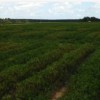 This 10-page fact sheet summarizes the 2013 in-furrow and foliar fungicide programs for control of early and late leaf spot and white mold (southern stem rot) of peanut in Jay, Florida. It shows the effectiveness of 13 fungicide programs for disease control, as compared to no treatment. This data represents only one year and one location, and readers are cautioned that test results should be considered over several locations and years before final conclusions are valid. Written by Darcy E. P. Telenko, John Atkins, and Nick Dufault, and published by the UF Department of Plant Pathology, January 2014.
This 10-page fact sheet summarizes the 2013 in-furrow and foliar fungicide programs for control of early and late leaf spot and white mold (southern stem rot) of peanut in Jay, Florida. It shows the effectiveness of 13 fungicide programs for disease control, as compared to no treatment. This data represents only one year and one location, and readers are cautioned that test results should be considered over several locations and years before final conclusions are valid. Written by Darcy E. P. Telenko, John Atkins, and Nick Dufault, and published by the UF Department of Plant Pathology, January 2014.
http://edis.ifas.ufl.edu/pp310
Southern Highbush Blueberry Cultivars from the University of Florida
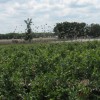 Many improved southern highbush cultivars have been developed by the University of Florida breeding program since the initial releases of ‘Sharpblue’, ‘Flordablue’, and ‘Avonblue’ in the mid-1970s. Today there are more blueberry cultivar choices available for Florida growers than ever before, but in every case, cultivar selection involves weighing the advantages and disadvantages of a cultivar relative to the grower’s needs. Unfortunately, there are no perfect cultivars suited for every location and management system. This 10-page fact sheet categorizes southern highbush cultivars into four groups: major cultivars, secondary cultivars, new options, and historical cultivars. Proper cultivar selection is critical to a successful blueberry enterprise, and growers should seek information from multiple sources, including their local county Extension office. Written by J.G. Williamson, J.W. Olmstead, G.K. England, and P.M. Lyrene, and published by the UF Department of Horticultural Sciences, April 2014.
Many improved southern highbush cultivars have been developed by the University of Florida breeding program since the initial releases of ‘Sharpblue’, ‘Flordablue’, and ‘Avonblue’ in the mid-1970s. Today there are more blueberry cultivar choices available for Florida growers than ever before, but in every case, cultivar selection involves weighing the advantages and disadvantages of a cultivar relative to the grower’s needs. Unfortunately, there are no perfect cultivars suited for every location and management system. This 10-page fact sheet categorizes southern highbush cultivars into four groups: major cultivars, secondary cultivars, new options, and historical cultivars. Proper cultivar selection is critical to a successful blueberry enterprise, and growers should seek information from multiple sources, including their local county Extension office. Written by J.G. Williamson, J.W. Olmstead, G.K. England, and P.M. Lyrene, and published by the UF Department of Horticultural Sciences, April 2014.
http://edis.ifas.ufl.edu/hs1245